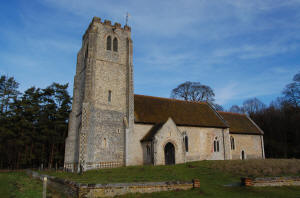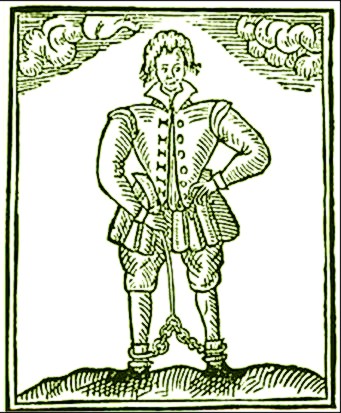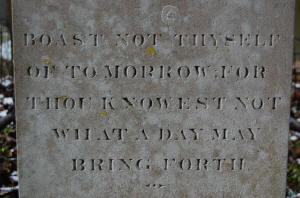| West Harling is another of Norfolk's
deserted
villages which, according to Alan Davison, was abandoned
during the first half of the 18th Century. Today, All
Saints church stands at the end of a long farm track in a clearing
about a mile from East
Harling. The building is now redundant and is cared for by the
Churches Conservation Trust.

All Saints Church, West
Harling The poet and satirist Thomas
Nashe (1567-1601) moved to West Harling rectory at
the age of six in 1574 when
his father became the vicar. He would later record the 'fearefull
croking cry' of ravens and the 'blow and batter' of the
wind here. Nashe was born in Lowestoft and was later
educated at St John's College, Cambridge.

Thomas Nashe in Chains In 1588 he moved
to London and in 1589 he provided the preface for Robert
Greene's Menaphon. (Greene was another Norfolk
poet - see Norwich School.)
Nashe's satire led him into constant trouble with the
authorities and in 1599, following the appearance of his
comedy The Isle of Dogs, he was forced
to flee to Great Yarmouth. It was here that he wrote his
mock encomium Nashes Lenten Stuff about the red
herring. West Harling also has another
claim to literary fame - for it was the home of the
prodigious letter writer Philip Gawdy (1562-1617). Many
of his letters were acquired by the British Library in
1866 following the sale of items belonging to the
Norfolk antiquary Sir John Fenn (see
Dereham). Fenn was the first
editor of the Paston Letters.
In one of his letters to his father, dated 16 November
1587, Gawdy describes attending one of Shakespeare's plays at
a Theatre in London. In the churchyard at
West Harling there a splendid headstone with the
following sober message: 'Boast Not Thyself of Tomorrow;
Thou Knowest Not What a Day May Bring Forth.'

Gravestone at West Harling |

